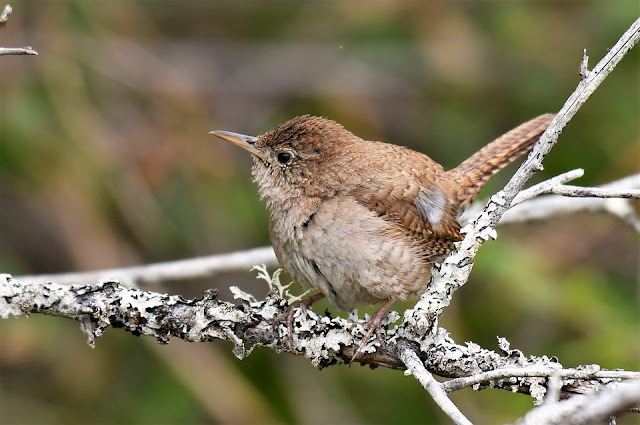 Northern Cardinal (Cardinalis cardinalis) — Adults are eight to nine inches long, slightly smaller than a robin. Both sexes have an orange-red bill and a prominent head crest. The male’s plumage is an overall bright red; the female is yellowish-brown with red tints on her wings, tail, and crest. The cardinal is a common bird in the The Southeastern United States. Before 1900, the species was rare in Pennsylvania, but over the last century, cardinals have spread as far north as Maine and southern Canada.
Northern Cardinal (Cardinalis cardinalis) — Adults are eight to nine inches long, slightly smaller than a robin. Both sexes have an orange-red bill and a prominent head crest. The male’s plumage is an overall bright red; the female is yellowish-brown with red tints on her wings, tail, and crest. The cardinal is a common bird in the The Southeastern United States. Before 1900, the species was rare in Pennsylvania, but over the last century, cardinals have spread as far north as Maine and southern Canada.
They now inhabit all of the Keystone State, except for areas of unbroken forest on the Allegheny High Plateau. Cardinals also breed across the Midwest and in Central America from Mexico to Guatemala. They are year-round residents throughout their range. Cardinals live in thickets, hedgerows, brushy fields, swamps, gardens and towns , and cities. They need dense shrubs for nesting; these can range from multiflora rose tangles sprawling between woodlots and fields, to hedges of privet and honeysuckle on shady streets. Hawthorns, lilac, gray dogwood and dense conifers also provide nesting cover. Mated pairs of cardinals use territories of three to 10 acres.
Northern Cardinals eat caterpillars, grasshoppers, beetles, bugs, ants, flies and many other insects; fruits of dogwood, mulberry and wild grape; and seeds of smartweeds and sedges, grains scattered by harvesting equipment, and sunflower seeds at birdfeeders. Cardinals are not particularly fearful of humans. One day a cardinal landed on a log about three feet from where I was. It furiously crushed a black beetle between its mandibles, discarded with a shake of its head the beetle’s wing sheaths and spiny legs, swallowed the beetle, defecated and flew off: not just a flash of pretty color, I found myself thinking, but a fearsome predator in its own right. Cardinals begin calling in February and March, signaling the onset of the breeding season. Males and females sing equally well.
The song is a series of clear whistled notes, whoit whoit whoit (like a kid learning to whistle) or wacheer wacheer. Cardinals often countersing: males on adjacent territories, or pairs within their own territory, alternately match songs. As a part of courtship, the male will pick up a bit of food (such as a sunflower kernel at a feeder) in his bill and sidle up to his mate; the two touch beaks as she accepts the morsel. It takes the female three to nine days to build the nest, a loose cup woven out of twigs, vines, leaves, bark strips, and rootlets, lined with fine grasses or hair. Nests, rarely higher than six feet, are often placed in the thickest, thorniest scrub on the pair’s territory.
The female lays two to five eggs (commonly three or four), which are whitish and marked with brown, lavender and gray. She does most of the incubating, and the male brings her food. The young hatch after about 12 days. Their parents feed them regurgitated insects at first, then whole insects. The young fledge after 10 days; the male may continue to feed them for a few days while the female builds another nest and begins a second clutch. Cardinals can produce up to four broods per year. Nest predators include snakes, crows, blue jays, house wrens, squirrels, chipmunks , and domestic cats. Brown-headed cowbirds often lay their eggs in cardinal nests, and the cardinals rear the cowbird nestlings.
 Cardinals compete with gray catbirds for food and nest sites; catbirds usually dominate in these interactions and may force cardinals to the fringe of usable habitat. In fall the pair bond weakens between males and females. They stay together, however, and may join with other cardinals to form feeding groups that usually number 6 to 20 birds.
Cardinals compete with gray catbirds for food and nest sites; catbirds usually dominate in these interactions and may force cardinals to the fringe of usable habitat. In fall the pair bond weakens between males and females. They stay together, however, and may join with other cardinals to form feeding groups that usually number 6 to 20 birds.
In winter, white-footed mice sometimes move into old cardinal nests, stuff the cups with plant matter, and set up housekeeping. Cardinals are preyed on by hawks and owls, as well as foxes and other ground predators. The longevity record is 15 years.
Cardinal populations rose steadily in Pennsylvania through the 20th century. Several factors may have helped Cardinalis cardinalis overspread the state during that period: an increase in edge habitats caused by rural development; a period of warm winters in the early l900s; a similar warming trend in recent years; and an increase in backyard feeding stations dispensing high-energy seeds that help cardinals and other birds survive frigid weather.
Also Read: Lilac Breasted Roller, Most Attractive Bird / Indian Roller Bird / Yellow Cardinal – One in Million BirdsAffiliates Links:
How One Woman Discovered the Female Fat-Loss Code Missed by Modern Medicine And Lost 84lbs Using a Simple 2-Step Ritual That 100% Guarantees Shocking Daily Weight Loss
60 Seconds Habit ! That Reversed Type 2 Diabetes and Melted 56 lbs of Fat
Boost Your Energy, Immune System, Sexual Function, Strength & Athletic Performance
Diabetes Remedy # 1 Mega Offer for 2019










